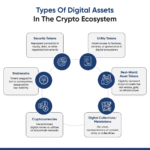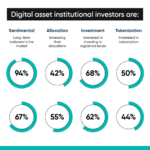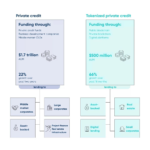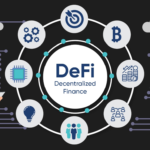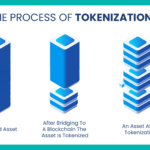The Future of Blockchain Layer 1 Protocols: Innovations, Challenges, and Market Impact
The blockchain industry has undergone rapid transformation since the inception of Bitcoin in 2008. As blockchain technology continues to mature, Layer 1 protocols—the foundational blockchains that underpin the entire ecosystem—are evolving to meet new demands. This white paper explores recent innovations in Layer 1 protocols, addresses the challenges they face, and assesses their impact on the broader blockchain market. It aims to provide strategic insights for developers, businesses, and stakeholders involved in blockchain technology, including consultancy for DeFi finance investments, blockchain asset investments consultants, and stablecoin investment consultants.
Introduction
What Are Layer 1 Protocols?
Layer 1 protocols, often referred to as the foundation or core of blockchain architecture, act as the fundamental building block for the entire ecosystem. These protocols establish the core functionalities of a blockchain network, providing the essential infrastructure upon which decentralized applications (dApps) and subsequent blockchain layers can be built. Popular examples include the titans of the blockchain world, Bitcoin and Ethereum, alongside newer and innovative protocols like Solana and Polkadot. Each Layer 1 protocol boasts its own unique set of rules and mechanisms that govern its operation.
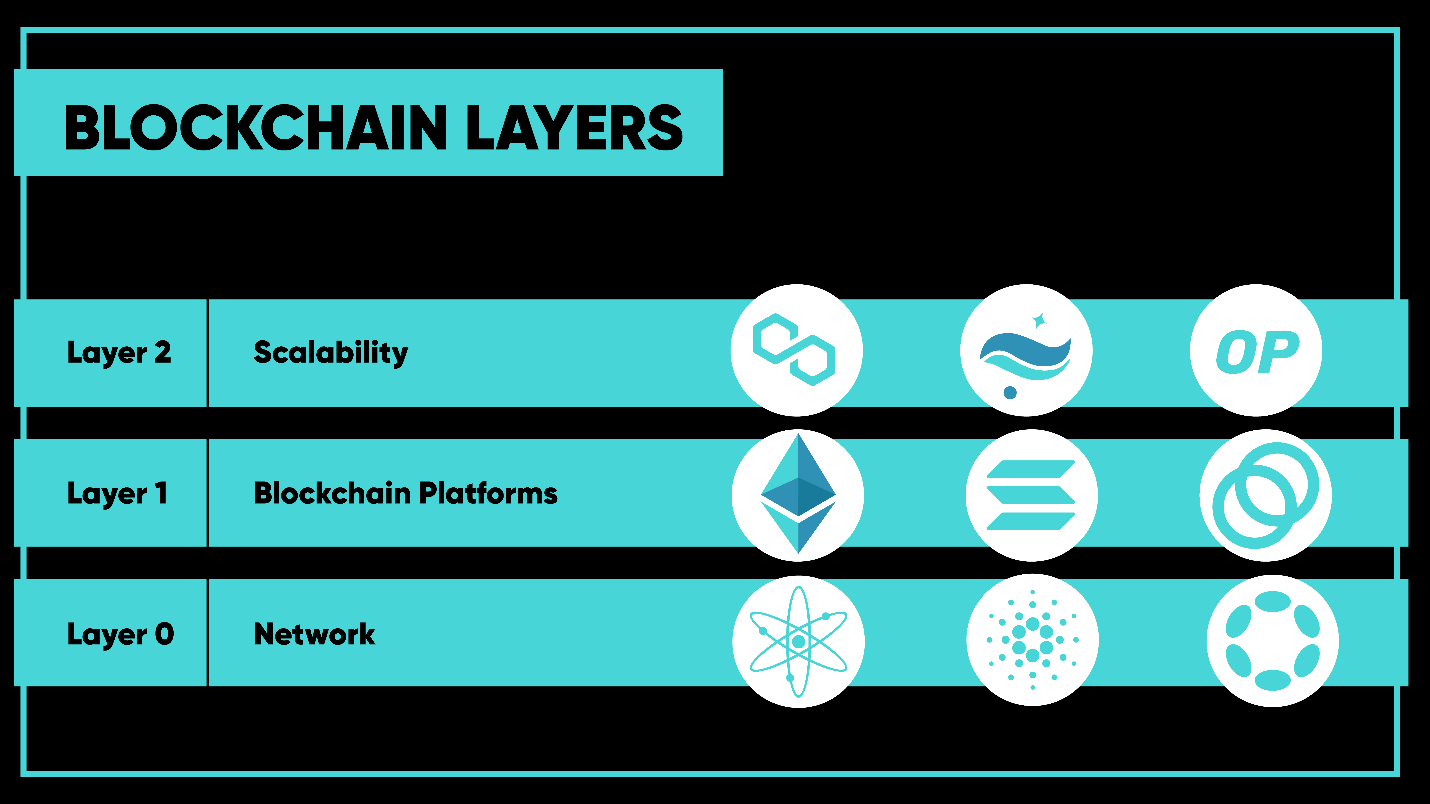
One of the most critical responsibilities of a Layer 1 protocol is to ensure the security and integrity of the entire network. This is achieved through robust cryptographic mechanisms that safeguard transactions and prevent unauthorized modifications to the distributed ledger. Layer 1 protocols also establish a consensus mechanism, a critical function that determines how participants in the network agree on the validity of transactions and the current state of the blockchain. Popular consensus mechanisms include Proof-of-Work (PoW), the energy-intensive method employed by Bitcoin, and Proof-of-Stake (PoS), a more resource-efficient alternative used by Ethereum and many newer protocols.
Furthermore, Layer 1 protocols are responsible for validating transactions. This involves verifying that a transaction is legitimate and complies with the network’s rules before it is added to the permanent record on the blockchain. Transaction validation helps to prevent fraudulent activity and ensures the overall stability and reliability of the network.
Understanding the intricacies of Layer 1 protocols is crucial for firms offering digital asset investment solutions. By thoroughly comprehending the strengths, weaknesses, and design choices of various protocols, these firms, like global digital asset consulting firms specializing in blockchain and digital asset consulting or digital asset strategy consulting firms, can make informed investment recommendations and guide clients towards assets built on secure and scalable blockchain foundations. This knowledge empowers them to navigate the ever-evolving blockchain landscape and identify investment opportunities with long-term potential, particularly in areas like defi finance investments or altcoin investment options.
Digital asset management consultants can leverage their expertise in Layer 1 protocols to craft comprehensive digital asset portfolios for clients. This might include a mix of established cryptocurrencies like Bitcoin (with the help of bitcoin investment consultants), stablecoins for investment (guided by stablecoin investment consultants), and assets built on promising Layer 1 protocols suitable for defi finance consulting services. For a more diversified portfolio, they might also consider incorporating real world assets on chain investments, a field where real asset tokenization investment consultants and RWA defi investment consultants can provide valuable insights.
Crypto investment companies and hedge fund investment companies can also benefit from a strong understanding of Layer 1 protocols. This knowledge can be applied to cryptocurrency investment solutions, crypto asset management, and the development of NFT portfolio management strategies. Partnering with digital assets consulting firms with expertise in digital asset consulting for compliance can further ensure adherence to evolving regulations in this dynamic space.
Importance of Layer 1 Protocols
The robustness and efficiency of Layer 1 protocols are crucial for the overall health of the blockchain ecosystem. They influence scalability, security, and the ability to support complex applications. As the foundation of blockchain technology, advancements in Layer 1 protocols drive innovation across the entire industry, impacting digital asset portfolio management and crypto investment firms.
Innovations in Layer 1 Protocols
Scalability Solutions
Sharding
Sharding, a technological innovation in the blockchain realm, addresses a fundamental challenge: scalability. Traditionally, blockchains function as a single, unified ledger, where every node in the network stores a complete copy of the transaction history. This approach ensures security and transparency, but it also creates limitations. As the number of users and transactions on a blockchain network increases, the size of the ledger grows exponentially. This can lead to slower transaction processing times and higher fees, hindering the network’s ability to accommodate widespread adoption.
Sharding tackles this challenge by introducing a concept akin to compartmentalization. It involves partitioning the blockchain network into smaller, more manageable segments called shards. Each shard acts as a mini-ledger, containing a subset of the overall transaction history. Imagine a library with a single, massive catalog for every book. Sharding would be like dividing the catalog into sections by genre or author, creating more manageable units for librarians to maintain and users to navigate.
Here’s how sharding operates:
Transaction Distribution: When a transaction occurs on a sharded network, a routing mechanism determines the appropriate shard for processing. This routing can be based on factors like the user’s account address, the type of smart contract involved, or a random selection process.
Independent Processing: Each shard maintains its own validator nodes, responsible for verifying the legitimacy of transactions within that shard. This distribution of processing power alleviates the burden on individual nodes, allowing for faster transaction confirmation times.
Smart Contract Execution: Smart contracts, self-executing programs residing on the blockchain, can also be sharded. This means a smart contract might be divided and deployed across multiple shards, depending on its functionality and data requirements.
Cross-Shard Communication: While each shard operates independently, there are mechanisms in place for communication and data exchange between shards. This is crucial for ensuring the overall consistency and integrity of the network, especially when transactions involve interactions across multiple shards.
The benefits of sharding are substantial. By distributing the workload across multiple shards, sharded blockchains can achieve significantly higher transaction throughput (TPS) compared to traditional single-ledger blockchains. This translates to faster processing times and potentially lower transaction fees, paving the way for broader scalability and real-world applications.
Layer 2 Solutions
Layer 2 solutions have emerged as a critical innovation to address the scalability challenges faced by many prominent blockchains. These solutions operate on top of existing Layer 1 blockchains, essentially acting as secondary layers that handle a portion of the transaction processing burden. This approach allows the underlying Layer 1 blockchain to maintain its core security guarantees and decentralized nature, while simultaneously enabling faster and more cost-effective transactions on the Layer 2 network.
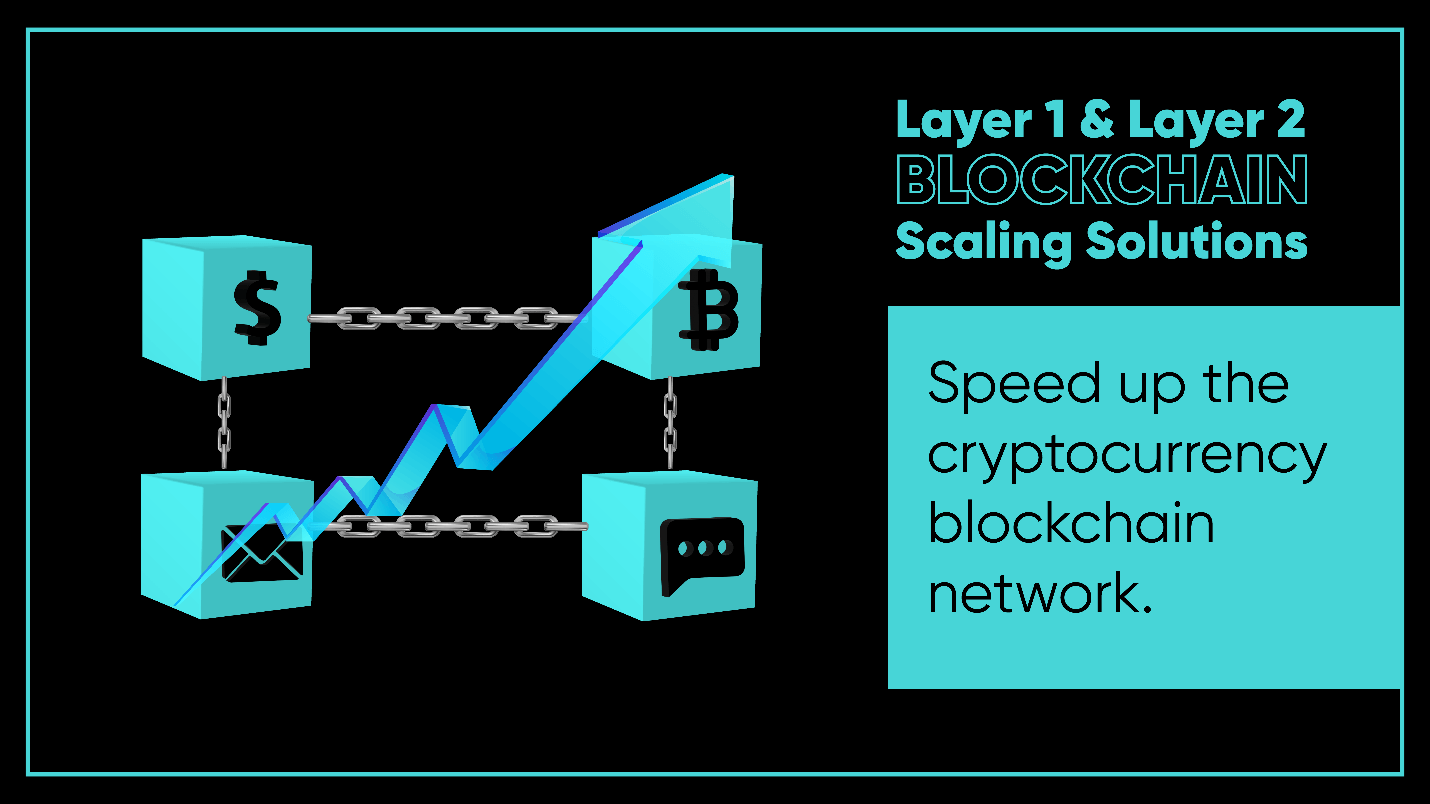
Understanding the Bottleneck: Scalability Challenges in Blockchains
Traditional blockchains, like Bitcoin and Ethereum, were designed with a core principle in mind: decentralization. This means that there’s no single authority controlling the network, and instead, it’s maintained by a distributed network of computers called nodes. Each node maintains a complete copy of the transaction history, acting as a distributed ledger. This approach offers several advantages:
Transparency: Everyone on the network can view all transactions, fostering trust and accountability.
Immutability: Once a transaction is recorded on the ledger, it cannot be altered or deleted, guaranteeing the integrity of the data.
Security: The distributed nature of the network makes it highly resistant to censorship and fraud.
However, this design choice also introduces a significant challenge: scalability. As the number of users and transactions on the network increases, the size of the ledger grows exponentially. This can lead to several drawbacks that hinder the real-world applicability of these blockchain networks:
Slow Transaction Processing Times: With a larger ledger to verify, each node requires more time to process each transaction. This can result in significant delays for users waiting for their transactions to be confirmed. Imagine waiting several minutes or even hours for a simple coffee purchase to be confirmed on the blockchain!
High Transaction Fees: To incentivize miners (in Proof-of-Work blockchains like Bitcoin) or validators (in Proof-of-Stake blockchains like Ethereum) to prioritize processing their transactions, users may need to pay higher fees. These fees can become especially burdensome during periods of network congestion, when demand for transaction processing outpaces available capacity. This can make everyday transactions on the blockchain impractical and discourage wider adoption.
Limited Network Throughput: Just like a highway with a limited number of lanes, traditional blockchain networks have a finite capacity for processing transactions per second (TPS). As the number of users attempting to use the network simultaneously increases, the network can become congested, leading to slow processing times and higher fees.
These scalability limitations pose a significant hurdle for blockchain technology to reach its full potential and revolutionize various industries. Fortunately, innovative solutions like sharding and Layer 2 protocols are emerging to address these challenges and pave the way for a more scalable and efficient future for blockchain technology.
How Layer 2 Solutions Address Scalability Issues
Layer 2 solutions alleviate these challenges by introducing a layer of indirection for transaction processing. Here’s a breakdown of how they work:
Offloading Processing: Layer 2 solutions take a portion of the transaction load off the main chain. This can be achieved through various mechanisms, such as state channels (used by the Lightning Network) or rollups (employed by Ethereum scaling solutions like Optimism and Arbitrum).
Faster Processing: By handling transactions off-chain, Layer 2 solutions can leverage faster and more efficient validation methods. This translates to significantly faster transaction processing times compared to the main chain.
Reduced Fees: The off-chain nature of Layer 2 transactions also leads to lower fees. Since they don’t compete for limited block space on the main chain, users can expect to pay substantially less for transactions processed on Layer 2.
Security Through Anchoring: While Layer 2 solutions operate independently, they remain anchored to the underlying Layer 1 blockchain for security purposes. Periodically, the state of the Layer 2 network, or a summary of the transactions processed, is submitted to the main chain for verification and permanent record-keeping. This ensures that Layer 2 transactions inherit the security and immutability of the main chain.
The Role of Crypto Investment Companies in Layer 2 Adoption
Crypto investment companies, keenly aware of the potential of Layer 2 solutions, recognize their transformative potential. These solutions are crucial for maintaining the integrity and performance of blockchain networks as they scale and attract a broader user base. By facilitating faster and more affordable transactions, Layer 2 solutions pave the way for a wider range of use cases for blockchain technology, including:
Decentralized Finance (DeFi): Faster and cheaper transactions on Layer 2 unlock the potential for DeFi applications to become more user-friendly and accessible. This presents exciting opportunities for consultancy for defi finance investments and defi finance consulting services.
Micropayments: Layer 2 solutions enable efficient processing of low-value transactions, making them ideal for micropayments and everyday use cases. This opens doors for innovative payment solutions and disrupts traditional financial models.
Scalable dApps: By reducing transaction costs and processing times, Layer 2 solutions empower developers to build more scalable and feature-rich decentralized applications (dApps). This can lead to a surge in innovation across various sectors, creating exciting investment opportunities for digital asset investment solutions providers and digital asset strategy consulting firms.
Optimistic Rollups and ZK-Rollups
As blockchain technology matures, a fundamental challenge continues to loom: scalability. Traditional blockchains, while offering unparalleled security and transparency, struggle to handle the ever-increasing volume of transactions. This can lead to slow processing times and exorbitant fees, hindering broader adoption and hindering the potential of blockchain applications. Enter rollup solutions, a game-changing innovation designed to address these scalability bottlenecks.
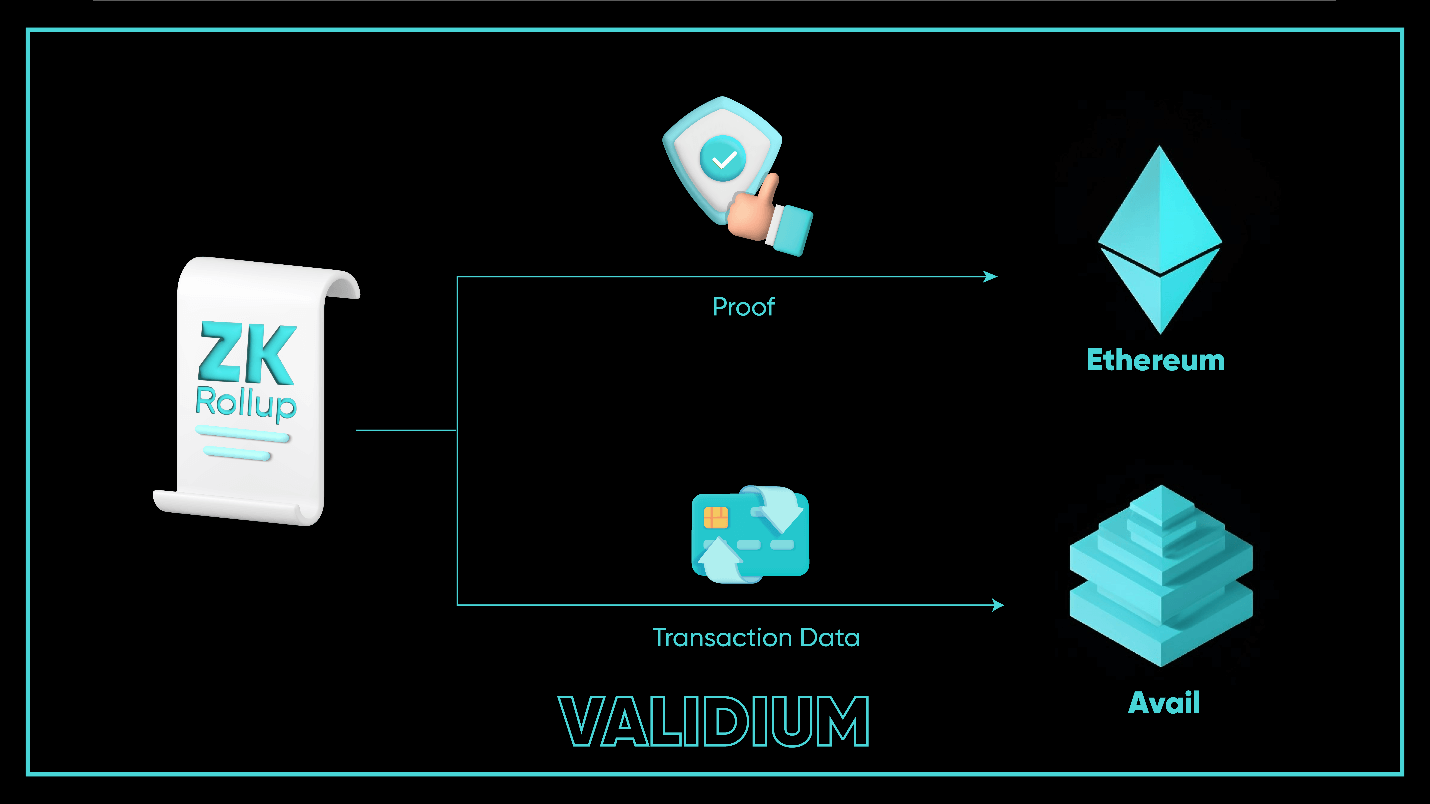
Rollups: The Scalability Cavalry Arrives
Rollups operate as a secondary layer built on top of existing Layer 1 blockchains, such as Ethereum. They function by taking a portion of the transaction load off the main chain, significantly increasing the overall processing capacity. Imagine a bustling highway with limited lanes. Rollups act like additional lanes built alongside the main highway, allowing for more traffic to flow concurrently without compromising safety.
Two Prominent Rollup Approaches: Optimistic Rollups and ZK-Rollups
While the core concept of rollups remains the same – offloading transaction processing to a secondary layer – there are two main approaches to achieving scalability: Optimistic Rollups and Zero-Knowledge Rollups (ZK-Rollups). Each approach boasts unique advantages and considerations:
Optimistic Rollups: Optimistic Rollups operate on the principle of “optimistic validity.” Transactions are assumed to be valid by default, and the network proceeds with processing them. However, a mechanism is in place for anyone to dispute a transaction if they believe it to be fraudulent. In such cases, a “fraud proof” needs to be submitted to the main chain, which then validates the transaction and determines its legitimacy. This process offers faster transaction processing times and lower fees compared to the main chain. However, there’s a potential delay associated with the fraud-proof mechanism, as the challenger needs to submit the proof and wait for the main chain to validate it.
Zero-Knowledge Rollups (ZK-Rollups): ZK-Rollups utilize a different approach, leveraging the power of cryptography. Instead of assuming validity, ZK-Rollups employ cryptographic proofs to demonstrate the validity of transactions without revealing the actual transaction details. This approach offers significant security benefits and ensures the validity of transactions before they are processed on the main chain. However, generating these cryptographic proofs can be computationally expensive, potentially leading to slightly higher transaction costs compared to Optimistic Rollups.
Strategic Considerations for Digital Asset Management and Portfolio Management
The emergence of rollup technologies has significant implications for digital asset management companies and portfolio management consultants. These technologies offer several key advantages:
Increased Investment Opportunities: Rollups unlock the potential for a wider range of blockchain-based assets and applications to thrive. This creates exciting investment opportunities for digital asset management companies, allowing them to diversify their portfolios and cater to a broader range of client interests.
Enhanced Scalability: With faster transaction processing times and lower fees, rollups pave the way for more efficient and cost-effective trading of digital assets. This can benefit portfolio management consultants by allowing them to execute trades more efficiently and potentially reduce management fees for clients.
Improved Risk Management: The inherent security features of rollups, particularly the cryptographic validation employed by ZK-Rollups, can enhance risk management practices for digital asset management companies. This allows for a more secure and reliable investment environment for both companies and their clients.
Consensus Mechanisms
The quest for a secure, efficient, and scalable blockchain has led to the exploration of various consensus mechanisms beyond the original Proof of Work (PoW) employed by Bitcoin. While PoW offers strong security guarantees, its energy-intensive mining process and limited transaction throughput pose significant challenges for wider adoption. This section delves into two prominent alternatives – Proof of Stake (PoS) and Byzantine Fault Tolerance (BFT) variants – and their implications for the future of blockchain technology.
Proof of Stake (PoS): A Greener and Faster Alternative
Proof of Stake (PoS) emerges as a more sustainable and scalable alternative to PoW. Unlike PoW, which relies on miners solving complex cryptographic puzzles to validate transactions and earn rewards, PoS employs a democratic approach. Here’s a breakdown of how it works:
Staking: In PoS systems, validators are chosen based on their stake in the cryptocurrency. The more cryptocurrency a user holds and is willing to “stake” as collateral, the higher the chance of being selected to validate the next block. This incentivizes validators to act honestly, as any attempt to manipulate the system could lead to the loss of their staked tokens.
Energy Efficiency: PoS eliminates the need for energy-guzzling mining hardware. Instead, validators leverage their existing holdings, resulting in a significantly smaller environmental footprint compared to PoW.
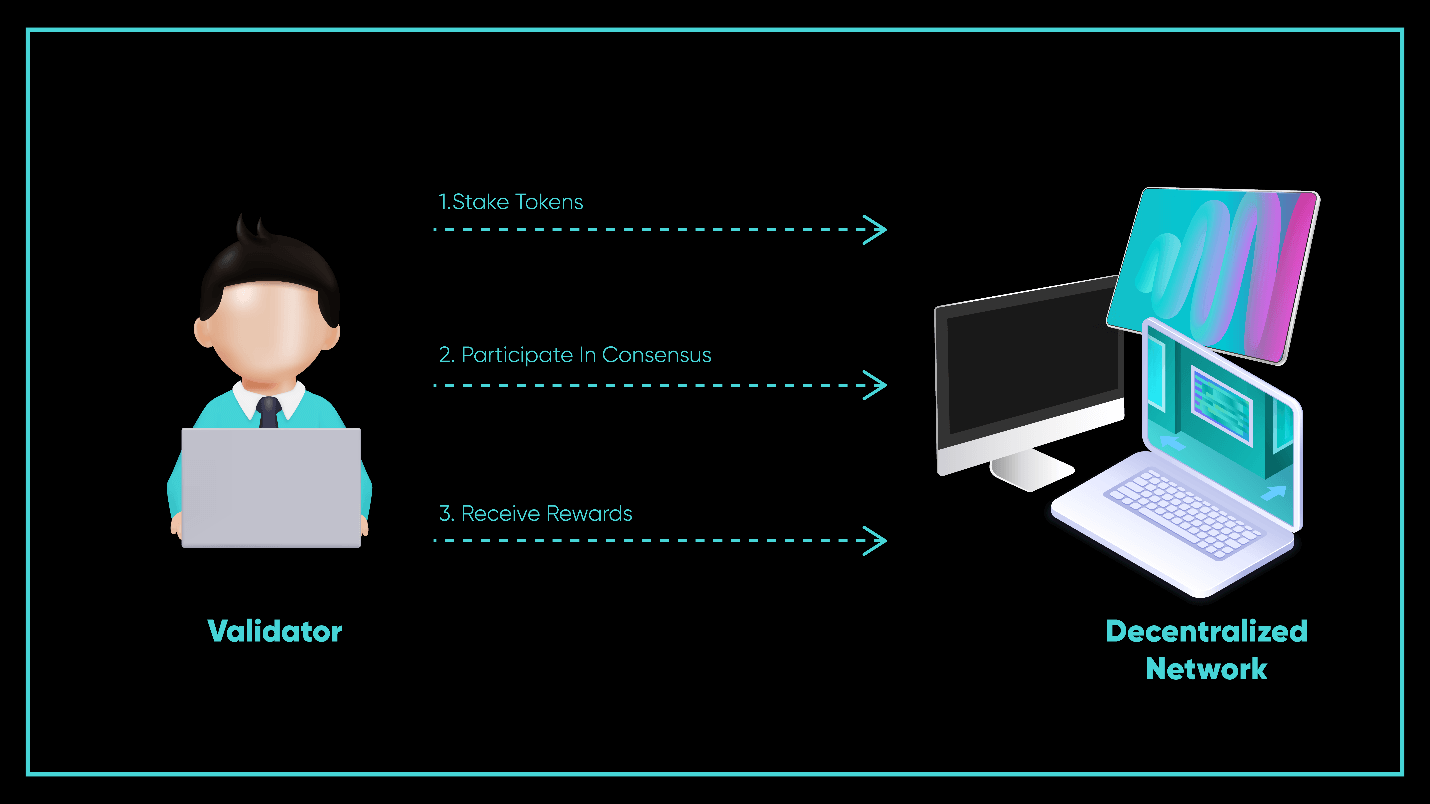
Faster Transaction Processing: By removing the computational burden of mining, PoS networks can achieve faster transaction processing times and lower fees. This opens doors for blockchain applications to cater to a wider range of use cases, particularly those requiring real-time transactions.
Ethereum 2.0 and the PoS Revolution:
The highly anticipated transition of Ethereum, the world’s second-largest blockchain platform, to a PoS model with Ethereum 2.0 is a watershed moment. This shift signifies the increasing adoption of PoS and its potential to propel mainstream blockchain adoption. Digital asset investment consultants are closely following these developments, advising clients on the potential impact of PoS on the value of Ethereum and other PoS-based cryptocurrencies.
Delegated Proof of Stake (DPoS): A Streamlined Approach
While PoS offers significant advantages, some argue that it can lead to centralization concerns, as those with the most significant holdings have a higher chance of being chosen as validators. Delegated Proof of Stake (DPoS) addresses this by introducing a voting mechanism:
Token Holder Voting: Token holders in a DPoS system elect a limited number of delegates who are responsible for validating transactions and maintaining the blockchain. This allows for a more distributed validation process compared to traditional PoS.
Scalability and Efficiency: DPoS systems can achieve faster transaction throughput due to the reduced number of validators. This makes them suitable for applications requiring high-speed and efficient transaction processing.
DPoS in Action: EOS and TRON Pave the Way
Several blockchain projects, such as EOS and TRON, have successfully implemented DPoS models. These projects boast impressive transaction processing speeds, making them attractive platforms for decentralized applications (dApps) requiring high scalability. Digital asset consulting for startups can leverage their expertise in DPoS to guide new ventures in building efficient and scalable blockchain applications.
Byzantine Fault Tolerance (BFT) Variants
Byzantine Fault Tolerance (BFT) is a class of consensus mechanisms designed to ensure that a distributed network can reach agreement (consensus) on the state of the system even in the presence of faulty or malicious nodes. This is crucial for blockchain networks, where maintaining a tamper-proof record of transactions is paramount.
Practical Byzantine Fault Tolerance (PBFT) and Tendermint: Leading the BFT Charge
Several BFT variants have emerged, each with its own strengths and weaknesses. Two prominent examples include:
Practical Byzantine Fault Tolerance (PBFT): PBFT is a well-established BFT variant offering strong security guarantees and efficient transaction processing. However, it can only handle a limited number of nodes, potentially hindering scalability for large-scale blockchain networks.
Tendermint: Tendermint is a BFT variant specifically designed for blockchain applications. It offers scalability and flexibility, making it suitable for powering various blockchain networks. Notably, Tendermint underpins the Cosmos network, a project focused on blockchain interoperability. Consultancy for DeFi finance investments often emphasizes the importance of BFT variants like Tendermint in maintaining the security and integrity of DeFi protocols.
Interoperability
Cross-Chain Communication
The true potential of blockchain technology lies not in isolated networks, but in their ability to seamlessly interact and exchange data. Interoperability, the ability for different blockchains to communicate and transfer assets with each other, is the key to unlocking a truly interconnected and thriving blockchain ecosystem. This section explores two groundbreaking advancements – cross-chain communication protocols and atomic swaps – that are revolutionizing how blockchains interact and fostering a more unified digital asset landscape.
Cross-Chain Communication: Breaking Down the Silos
Imagine a world where data is confined within isolated silos, unable to flow freely between different systems. This is analogous to the current state of many blockchain networks, which operate in relative isolation. Interoperability protocols are the bridges that connect these isolated islands, enabling seamless communication and asset transfer across different blockchains.
Polkadot and Cosmos: Leading the Charge
At the forefront of the interoperability movement are pioneering protocols like Polkadot and Cosmos. These protocols act as facilitators, enabling communication and interoperability between diverse blockchains:
Polkadot: Polkadot employs a unique sharded architecture, with a central relay chain acting as the backbone for communication. Parachains, independent blockchains built using Polkadot, can connect to the relay chain, enabling them to interact with other parachains and inherit the security of the relay chain. This modular design fosters scalability and interoperability within the Polkadot ecosystem.
Cosmos: Cosmos leverages a different approach, utilizing the Inter-Blockchain Communication (IBC) protocol. IBC acts as a standardized communication channel, allowing different blockchains built with the Cosmos SDK (Software Development Kit) to seamlessly exchange data and assets. This open-source approach promotes interoperability across a broader spectrum of blockchains beyond the Cosmos ecosystem.
The Impact on Real-World Asset (RWA) Tokenization
The ability to transfer assets seamlessly across different blockchains unlocks exciting possibilities for real-world asset (RWA) tokenization. Real-world assets tokenization investment consultants emphasize the importance of interoperability for diversified digital asset strategies. Imagine a scenario where tokenized shares of a company can be easily transferred between different trading platforms built on separate blockchains. Interoperability protocols like Polkadot and Cosmos pave the way for a more liquid and efficient market for tokenized real-world assets.
Atomic Swaps: Trustless and Decentralized Asset Exchange
While cross-chain communication protocols enable communication between blockchains, atomic swaps take a step further by facilitating direct, peer-to-peer exchanges of cryptocurrencies across different blockchains. Here’s how they work:
Eliminating Intermediaries: Unlike traditional exchanges, which act as intermediaries for cryptocurrency trades, atomic swaps allow users to directly exchange cryptocurrencies without relying on a trusted third party. This enhances user privacy and control over their digital assets.
The Power of Smart Contracts: Atomic swaps leverage the power of smart contracts, self-executing code stored on the blockchain. These smart contracts ensure that the exchange of cryptocurrencies happens atomically, meaning either both parties receive their desired assets or the transaction is reversed entirely. This eliminates the risk of counterparty default, a common concern in traditional exchanges.
Digital Asset Consulting for Compliance in the Age of Atomic Swaps
The decentralized nature of atomic swaps presents unique challenges from a regulatory standpoint. Digital asset consulting for compliance plays a crucial role in helping clients navigate these complexities. Consulting firms can assist clients in developing strategies for utilizing atomic swaps while adhering to relevant regulations and mitigating potential compliance risks. For example, they can advise on implementing Know Your Customer (KYC) and Anti-Money Laundering (AML) procedures within the context of atomic swaps.
Privacy Enhancements
While transparency is a core tenet of blockchain technology, there are situations where user privacy and data protection become paramount. Fortunately, innovative cryptographic techniques are emerging to address these concerns. This section delves into two prominent privacy-enhancing technologies – Zero-Knowledge Proofs (ZKPs) and Confidential Transactions – and explores their potential to create a more balanced blockchain ecosystem that respects both transparency and privacy.
Zero-Knowledge Proofs: Revealing Only What’s Necessary
Imagine proving you are over 21 to enter a bar without revealing your actual date of birth. This is the essence of Zero-Knowledge Proofs (ZKPs). In the context of blockchain technology, ZKPs allow one party (the prover) to convince another party (the verifier) that a statement is true without revealing any additional information beyond the truth of the statement itself.
ZKPs in Action: Zcash and zk-SNARKs
ZKPs are already being implemented in several blockchain protocols, offering significant privacy benefits:
Zcash: Zcash, a privacy-centric cryptocurrency, utilizes ZKPs to shield transaction senders and receivers from public view. While the overall transaction amount is visible on the blockchain, the specific identities of the parties involved and the transferred amount remain confidential.
zk-SNARKs (Zero-Knowledge Succinct Non-Interactive Argument of Knowledge): zk-SNARKs are a specific type of ZKP known for their efficiency. They allow for very concise proofs, making them suitable for use in resource-constrained environments like blockchains. zk-SNARKs are being explored for various applications, including scaling solutions like zk-Rollups, which leverage ZKPs to achieve scalability without compromising on privacy.
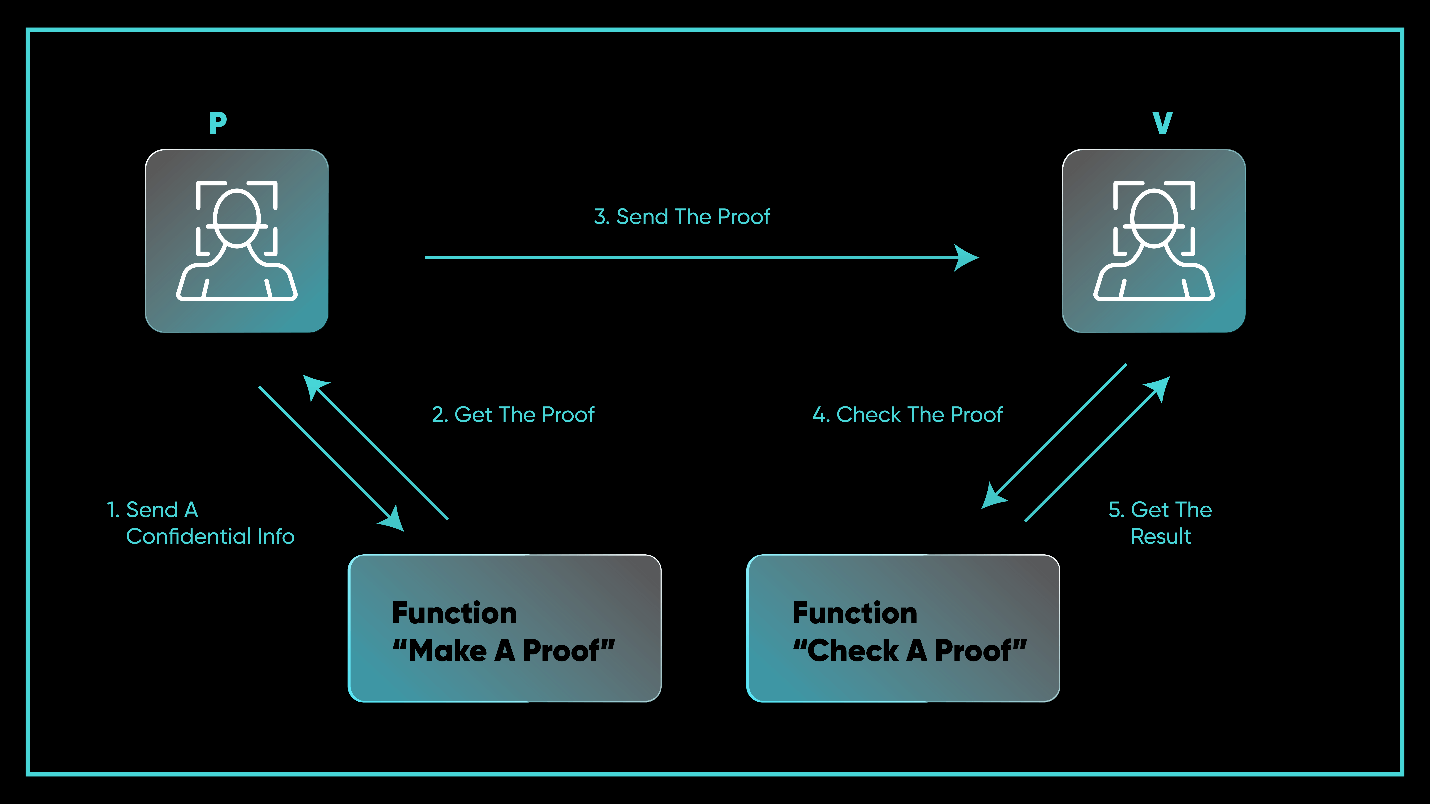
Challenges Facing Layer 1 Protocols
While blockchain technology has revolutionized various sectors, Layer 1 protocols, the foundational layer upon which applications are built, continue to face intricate challenges. Achieving scalability, security, decentralization, and interoperability – the holy grail of blockchain – requires a delicate balancing act. This section delves deeper into these core challenges and explores the ongoing advancements that are paving the way for a more robust and mature blockchain ecosystem.
Scalability: Bridging the Throughput Gap
Despite significant advancements, scalability remains a hurdle for widespread blockchain adoption. Traditional financial networks can process thousands of transactions per second, whereas many Layer 1 protocols struggle to handle a fraction of that volume. This limited throughput hinders the ability of blockchain applications to cater to real-world use cases.
Solutions on the Horizon: Sharding, Rollups, and Beyond
The quest for scalability has led to the exploration of various solutions:
Sharding: Sharding involves dividing the blockchain into smaller partitions called shards. Each shard processes a subset of transactions, theoretically increasing the overall transaction throughput of the network. However, sharding introduces complexities in data management and inter-shard communication.
Rollups: Rollups, as discussed previously, operate as a secondary layer on top of Layer 1 protocols. They bundle multiple transactions off-chain, perform the computations there, and then submit a compressed proof of validity back to the main chain. This significantly reduces the processing load on the main chain, leading to faster transaction times and lower fees.
Advanced Consensus Mechanisms: Consensus mechanisms, the protocols by which nodes agree on the state of the blockchain, can also impact scalability. Newer consensus mechanisms, such as Proof-of-Stake (PoS) and Byzantine Fault Tolerance (BFT) variants, offer faster transaction processing compared to traditional Proof-of-Work (PoW).
Digital Asset Management Consultants: Navigating the Evolving Landscape
Digital asset management consultants play a vital role in helping clients navigate the evolving landscape of scalability solutions. They continuously analyze these solutions, assess their trade-offs, and provide clients with the best strategies for building scalable blockchain applications or investing in projects with promising scalability solutions.
Security Concerns: Ever Vigilant in a Digital Frontier
As Layer 1 protocols become more intricate and interconnected, ensuring their security is paramount. Hackers and malicious actors constantly seek vulnerabilities to exploit, potentially leading to the loss of user funds and a decline in trust in blockchain technology.
The Security Landscape: Vulnerabilities and Mitigations
Several areas require ongoing vigilance to maintain robust security:
Consensus Mechanism Vulnerabilities: Flaws in the consensus mechanism can allow malicious actors to manipulate the network for their gain. Continuous research and development are crucial to identify and address potential vulnerabilities in consensus mechanisms.
Smart Contract Security: Smart contracts, self-executing code stored on the blockchain, are susceptible to bugs and exploits. Rigorous code audits and secure coding practices are essential to mitigate these risks.
Cross-Chain Communication Vulnerabilities: The emergence of interoperable protocols introduces new attack vectors. Robust security measures need to be implemented to ensure the secure transfer of assets and data across different blockchains.
Decentralization vs. Efficiency: Striking the Right Balance
Decentralization, a core principle of blockchain technology, ensures that no single entity controls the network. However, achieving true decentralization often comes at the expense of efficiency. Highly decentralized networks, while offering robust security and censorship resistance, often suffer from slower transaction throughput and higher latency.
The Balancing Act: Scalability vs. Decentralization
Finding the right balance between decentralization and efficiency is a continuous challenge. Here’s a breakdown of the trade-offs:
Highly Decentralized Networks: Offer greater security and censorship resistance, but may struggle with scalability and performance.
More Centralized Approaches: Can achieve higher transaction throughput and lower latency, but may compromise on the core principles of decentralization, potentially leading to a single point of failure.
Regulatory and Compliance Issues: Navigating the Evolving Landscape
The evolving regulatory landscape presents both challenges and opportunities for Layer 1 protocols. Governments and regulatory bodies are increasingly scrutinizing blockchain networks, particularly in areas related to anti-money laundering (AML) and know-your-customer (KYC) requirements. While regulations are essential for fostering trust and legitimacy in the blockchain space, they can also create hurdles for innovation. Protocols must navigate these challenges while maintaining their decentralized nature and user privacy.
Interoperability and Standards: Building Bridges for a Connected Future
Achieving seamless interoperability between different blockchain networks is essential for unlocking the full potential of blockchain technology. Real-world DeFi investment consultants often highlight the importance of adopting interoperability standards for portfolio diversification. Imagine a world where data and assets can flow freely across different blockchains, enabling a more interconnected and efficient digital asset ecosystem.
Standardization Efforts: Polkadot, Cosmos, and Beyond
Several projects are leading the charge in developing standards and protocols for interoperability:
Polkadot: Polkadot, as discussed previously, utilizes a relay chain and parachains to facilitate communication between independent blockchains. This modular approach promotes interoperability within the Polkadot ecosystem.
Cosmos: Cosmos leverages the IBC protocol, enabling communication between blockchains built with the Cosmos SDK. This open-source approach fosters broader interoperability across the blockchain landscape.
Universal Standards Development Organizations (USDOs): Organizations like the Enterprise Ethereum Alliance (EEA) and Hyperledger are working on developing industry-wide standards for blockchain interoperability.
Collaboration is Key: A Call for Industry-Wide Cooperation
Widespread adoption of these standards is necessary for true interoperability. Collaboration between different blockchain projects, industry stakeholders, and regulatory bodies is essential to create a cohesive and interconnected ecosystem. Here are some ways to achieve this:
Open-Source Development: Encouraging open-source development models fosters collaboration and innovation in the creation of interoperable standards.
Joint Research and Development: Collaboration between different blockchain projects on research and development initiatives can accelerate the development of interoperable solutions.
Standardization Body Engagement: Active participation in USDOs allows blockchain projects to contribute to the development of industry-wide standards that promote interoperability.
Market Impact of Layer 1 Protocols
Adoption by Enterprises
The winds of change are sweeping across the business landscape, and at the forefront of this transformation is blockchain technology. Enterprises, once hesitant due to scalability limitations, are now actively exploring how blockchain can revolutionize their operations. This newfound enthusiasm stems from the robust foundation provided by Layer 1 protocols, the bedrock upon which innovative enterprise applications are being built.
Demystifying Layer 1: The Unsung Hero of Enterprise Blockchain
Imagine a bustling city built upon a sturdy, well-maintained infrastructure. This infrastructure, analogous to Layer 1 protocols, provides the essential utilities and services – security, consensus mechanisms, and transaction validation – that enable a thriving ecosystem of applications to flourish. Layer 1 protocols act as the hidden heroes, silently ensuring the smooth operation of the entire blockchain network.
Unlocking Efficiency and Transparency: Blockchain Applications Across Industries
With a robust Layer 1 foundation in place, enterprises are now actively leveraging blockchain’s unique capabilities to streamline processes and enhance transparency across various sectors:
Supply Chain Management: Blockchain can track the movement of goods from origin to destination in real-time, ensuring authenticity, reducing fraud risks, and optimizing logistics. Imagine a food company effortlessly tracing its ingredients back to the farm, fostering greater consumer trust and brand loyalty.
Financial Services: Blockchain can revolutionize trade finance by automating processes, reducing settlement times, and minimizing paperwork. This can unlock significant cost savings and create a more efficient financial ecosystem.
Healthcare: Secure and tamper-proof record-keeping on a blockchain can empower patients to manage their medical data more effectively and facilitate secure data sharing between healthcare providers.
Voting Systems: Blockchain can enhance the integrity and security of voting processes by offering a tamper-proof record of ballots cast, reducing the risk of fraud and increasing voter confidence.
Decentralized Finance (DeFi)
The financial landscape is undergoing a seismic shift, driven by the emergence of Decentralized Finance (DeFi). This innovative ecosystem disrupts traditional financial intermediaries by leveraging the power of blockchain technology. Unlike traditional finance, which relies on centralized institutions like banks and brokers, DeFi operates on a peer-to-peer basis, empowering individuals to manage their finances without relying on third parties.
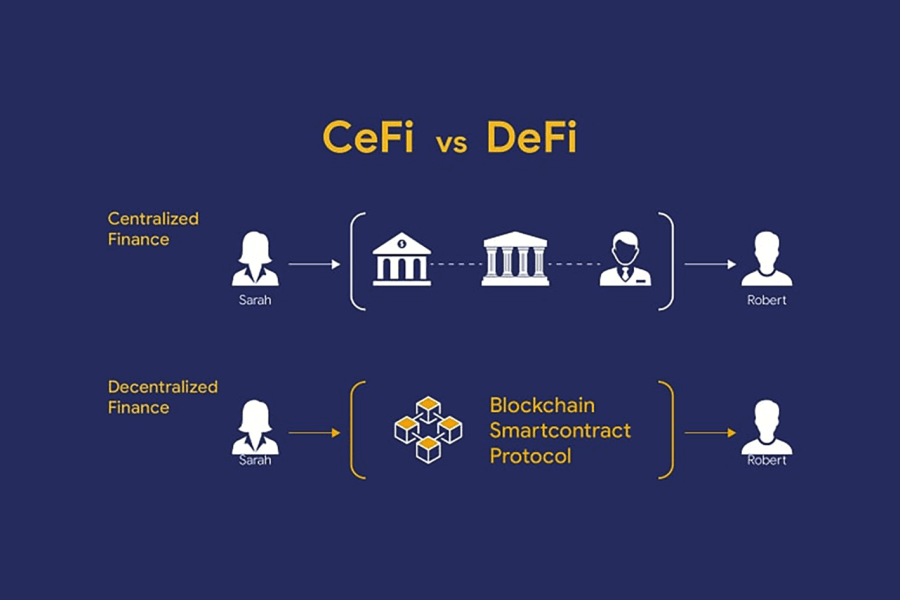
Layer 1: The Bedrock of the DeFi Revolution
At the heart of this revolution lies the critical role of Layer 1 protocols. These protocols act as the foundational infrastructure upon which DeFi applications are built. Imagine a thriving metropolis teeming with innovative businesses. Layer 1 protocols are analogous to the city’s robust and secure power grid, providing the essential functionalities – security, consensus mechanisms, and smart contract execution – that empower DeFi applications to flourish.
Pioneering DeFi Applications: Transforming Financial Services
One of the most remarkable aspects of DeFi is the emergence of a diverse range of decentralized applications (dApps) that are fundamentally reshaping the financial services landscape:
Decentralized Exchanges (DEXs): DEXs empower users to trade cryptocurrencies directly with each other, eliminating the need for centralized exchanges and offering greater control over their assets.
Lending Platforms: DeFi lending platforms connect borrowers and lenders directly, facilitating peer-to-peer lending and borrowing of cryptocurrencies. This disrupts traditional lending institutions and offers potentially more competitive interest rates for both borrowers and lenders.
Stablecoins: Stablecoins are cryptocurrencies pegged to the value of a real-world asset, such as the US dollar. They offer the benefits of cryptocurrency – fast transactions, global reach, and security – with the relative price stability of traditional fiat currencies. Stablecoins play a crucial role in DeFi by facilitating stable value transfers and mitigating price volatility within the ecosystem.
Non-Fungible Tokens (NFTs)
Non-Fungible Tokens (NFTs) have gained widespread popularity as a means of representing ownership of unique digital assets. Layer 1 protocols provide the infrastructure for minting, transferring, and trading NFTs. As the NFT market continues to expand, advancements in Layer 1 scalability and interoperability will be crucial for supporting high transaction volumes and cross-chain interactions. NFT portfolio management consultants are helping clients capitalize on this growing market.
Impact on Traditional Financial Systems
Blockchain technology has the potential to disrupt traditional financial systems by offering faster, cheaper, and more secure alternatives. Layer 1 protocols underpin these innovations, enabling real-time settlement, cross-border payments, and decentralized asset management. The ongoing development of Layer 1 protocols will continue to challenge and transform traditional financial institutions. Blockchain asset investment consultants provide insights into the potential impacts and opportunities in this area.
Integration with Emerging Technologies
Layer 1 protocols are increasingly being integrated with other emerging technologies, such as the Internet of Things (IoT), artificial intelligence (AI), and 5G. These integrations can enhance the capabilities of blockchain networks, enabling new applications and use cases. For example, IoT devices can leverage blockchain for secure data sharing, while AI can optimize blockchain-based decision-making processes. Digital asset strategy consulting firms are exploring these synergies to unlock new opportunities.
Strategic Insights for Stakeholders
Developers
Developers play a crucial role in advancing Layer 1 protocols. By focusing on scalability, security, and interoperability, they can create robust and efficient blockchain networks. Collaborating with other projects and contributing to open-source initiatives can accelerate innovation and drive the adoption of best practices. Developers should also stay informed about regulatory developments to ensure their solutions comply with evolving standards. Digital asset consulting for compliance can provide valuable guidance in this regard.
Businesses
Businesses looking to leverage blockchain technology should consider the strengths and weaknesses of different Layer 1 protocols. Selecting the right protocol for specific use cases is essential for maximizing the benefits of blockchain integration. Partnering with digital asset management consultants and blockchain asset consulting firms can help businesses navigate the complexities of blockchain adoption and develop effective strategies.
Digital Asset Specialists
Digital asset specialists need to stay informed about the latest developments in Layer 1 protocols to make informed investment decisions. Understanding the technical and market implications of different protocols can help them build diversified portfolios and mitigate risks. Collaborating with digital asset management firms can provide deeper insights.
Startups
Startups entering the blockchain space should focus on building solutions that leverage the strengths of Layer 1 protocols. By addressing scalability, security, and interoperability challenges, they can create innovative applications that stand out in the market. Working with digital asset consulting for startups can provide essential guidance and support during the early stages of development.
Conclusion
The future of blockchain Layer 1 protocols is filled with promise and challenges. Innovations in scalability, consensus mechanisms, interoperability, and privacy are driving the evolution of these foundational technologies. However, achieving widespread adoption requires addressing critical challenges related to scalability, security, decentralization, and regulatory compliance.
Layer 1 protocols will continue to play a pivotal role in shaping the blockchain ecosystem, influencing the growth of enterprises, DeFi, NFTs, and traditional financial systems. Stakeholders, including developers, businesses, digital asset managers, hedge fund managers, startups, and compliance officers, must stay informed and actively engage with these advancements to unlock new opportunities and drive the future of blockchain technology. Kenson Investments helps people stay updated on all of the developments and essential aspects of these fields. Get in touch with them today.



